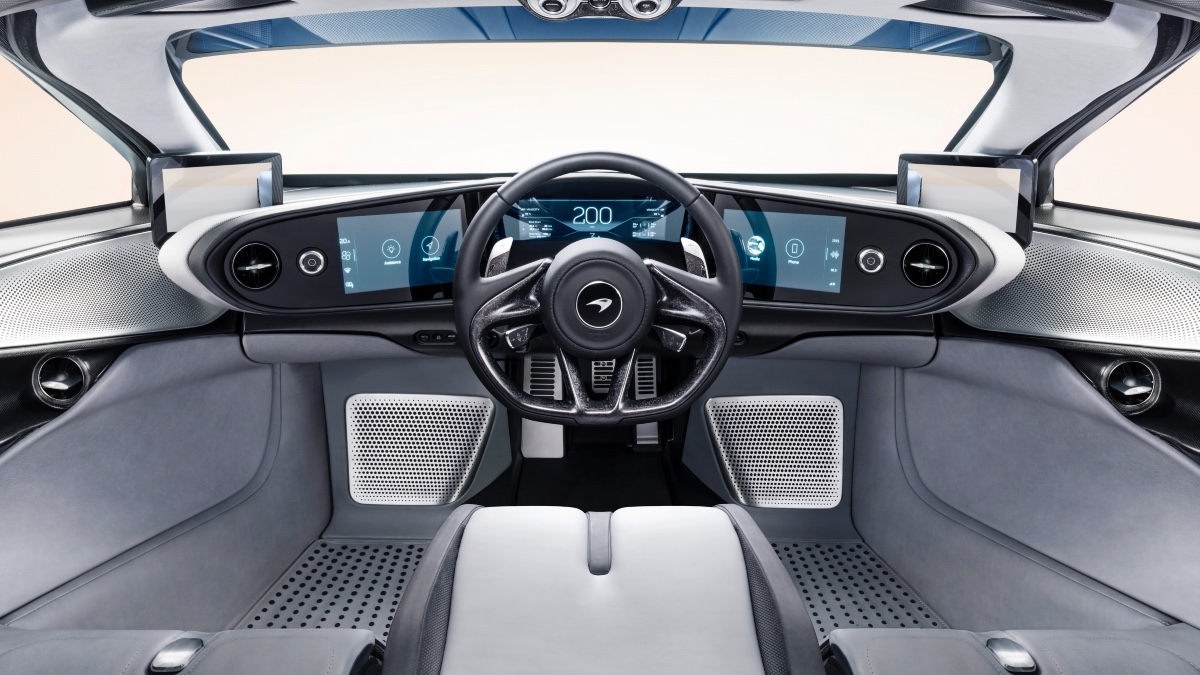
Except for some track-focused vehicles, such as McLaren supercars, most cars don’t have a driver’s seat in the middle. Depending on the country, the driver’s seat is either on the left or the right side of the vehicle. Why is this? Why isn’t the driver’s seat in the middle of a car?
Reasons why the driver’s seat is either on the left or right side of a car
McLaren Speedtail | McLaren
There are several reasons why a driver’s seat isn’t in the middle of a car. This includes:
- Positioning of the steering column
- Reduced visibility
- Less available seating space
- More difficult to enter and exit a car
The steering column needs to be positioned on either the left or right side

Mercedes-Benz car | Arteum.ro via Unsplash
From a mechanical standpoint, the steering column needs to be positioned on either the left or the right side of a car. This is because the steering column needs space to connect to other steering components under the hood, as detailed by Cars Simplified.
Most gas-powered vehicles have a front-mounted engine. If a steering column were located at the center of a car, the engine would get in the way. The other steering components could be routed around the engine, but it would make a vehicle heavier and more expensive.
Reduced visibility for a driver’s seat in the middle of a car
At first glance, one might think that a driver’s seat located in the center of a car would result in improved visibility. However, doing so would make the side-view mirrors impractical. Also, a middle-positioned seat would move the driver further away from the centerline of a road. As a result, it would be more difficult to see around corners, such as intersections.
Less available seating space

McLaren F1 | McLaren
Moving the driver’s seat to the middle of a car would also result in less available seating space. In a traditional seating layout, there’s generally plenty of space for the driver and front passenger.
However, with a center-positioned driver’s seat, while you can have three front seats, the left and right side passenger seats would not have much space. You could make a car wider, but that would have detrimental effects, such as increasing wind resistance and making it more challenging to maneuver and park a vehicle.
More difficult to enter and exit a car
If a driver’s seat were positioned at the center of a car, it would be more difficult to enter and exit the vehicle. The driver would have to awkwardly crawl over the area on either the left or right side of the driver’s seat. This is one of the reasons why many race cars still have the driver’s seat on the left or the right side.
Examples of cars with a driver’s seat in the middle
*{padding:0;margin:0;overflow:hidden}html,body{height:100%}img,span{position:absolute;width:100%;top:0;bottom:0;margin:auto}span{ height:1.5em;text-align:center;font:48px/1.5 sans-serif;color:white;text-shadow:0 0 0.5em black}

” src=”https://www.youtube.com/embed/YIw9lg9-t2M?feature=oembed” frame border=”0″ allow=”accelerometer; autoplay; clipboard write; encrypted-media; gyroscope; picture in picture” allowfullscreen>
RELATED: Why Do Cars Have 2 Headlights? — Instead of 1 or Many More
Most production cars have the driver’s seat on either the left or the right side. However, as noted earlier, there are some exceptions. An example is the McLaren F1, which has a racing-focused design with a center-positioned driver’s seat. It also has rear-view mirrors on both sides of the front window.
Along with the McLaren F1, here are examples of cars with a driver’s seat in the middle:
- McLaren F1
- McLaren Speedtail
- Aeon GT3 Spyder
- Ferrari 365P Berlinetta Speciale
- Land Rover Center Steer
- BAC mono
- Citroën Karin
- FA 1
- Gordon Murray Automotive T.50
- Center drive Porsche 911 Carrera S “Centro”
RELATED: Why Are Cars Designed to Go Over the Speed Limit?






